Doors are unique. As if they are still a product of design. As if they are still designed.
And the lines of a door, the pleasing rectangular shape set in a wall, it catches my eye so easily. It draws my camera lens. Even when they do not try doors are pretty. They stand out. Doors say something about the people who live behind them. About the place they are in. No matter where I go on my travels doors remain fascinating.
In Buenos Aires, the doors of big apartment buildings had large brass knobs, handles, or knockers—they were buffed each morning. The rest of the building was crossed with graffiti and the street was dirty with detritus. The door handles shone.
In Zanzibar, the doors of Stone Town are a cultural heritage. The slim alleyways are recently paved to catch up to modernity. Old men hunch over chess boards in claustrophobic courtyards, children play unobtrusively on the top steps. And the doors: carved with patterns—strong, intricate, ancient. Others with the later addition of a number or sign in crude paint scrawling over the boards. Some are modern steel, with no carvings and no landmark status, but they have character nonetheless.
In Cape Town, a former design capital of the world, doors bely the history and culture of the port city. Some doorways are of a distinctly eloquent europhile style, not of yesteryear but rather of yesterday clothed in the aesthetics of the classics. These doors hide their true nature—they snuff their location, stranded here at the southern tip of Africa, and act as if they are doorways to the ancients. But reality manages to weasel in. The stunning texture of paint, of colourful graffiti. You cannot keep Africa out.
Sometimes doorways are no more than gates. Gates made for cars that are too large to frame comfortably up close with my cellphone camera. When the space between the public and the private is too fragile doors get sucked back from the sidewalk, away from the noise and the life of the street, hidden behind high walls and electric fencing.
Sometimes a door is no more than a security barrier. Doors that say to the world: Stay away. Keep out. Don’t look at me.
The fun of photographing doors is that one breaks the rules. Facing a door, giving it your attention and moving into a space meant for those who want to make use of it, use it for its purpose: put in the key, press the bell, deliver the package, or enter.
But stand and consider? Here we break the rules.
And even then, do we really? Because standing in a doorway is not necessarily wrong. Just a little creepy for the people on the other side.
Doorways are private yet public. Which is why, when doors are placed far back behind high walls, when the only door is a foreboding gate and a small intercom, the rules are different.
Don’t press the bell unless you have business here.
Unless you want to be seen by the security camera overhead that blinks to life as soon as you step up to the entryway.
My camera cannot press bells, cannot break these rules. And anyway, that is a game for children.
The best place to photograph doors is not in the suburbs, where life is sucked away through veins that carry vehicles. Where pedestrians move to and from work, in straight, boring, lines. Where dawdling on the sidewalk is discouraged.
What are you looking at? What are you doing here? Do you have somewhere to be? If you stand too long staring at my house, my dog will continue to bark at you, until I bark at you from the window.
The places where I am able to photograph doors are places where the streets are alive.
Perhaps that is why I enjoy taking photographs of them. Where the collective is alive, allowed to move in the mix, allowed to bump against each other. Those places have eye-catching doors.
In Windhoek, I do not photograph doors. Mostly because I do not walk the streets here. My own fault. The city centre has doors, wide open—no fun to photograph. What is there to reveal when everything is out in the open? I am not interested in catching the facial expressions of shopkeepers on camera. I am interested in imagining what is behind a door. The possibility of what world it could hold. A wide open door holds no attraction for me.
It is when I walk that I find overlooked gems.
One day, on the way to the City Market, I noticed a garden gate with quirky art deco-inspired iron work. How many people walked right past it?
In Swakopmund I stood a while in the doorway of a German colonial building, eyeing the tile-sized pictures of the historic Woermann ship placed in the wall.
In Lüderitz I could not help but capture a forgotten door against a wall of defeated grey.
Why do people bother with decorating doors, doorways, and gates?
Why not leave them completely blank?
Or, rather, why cannot they stay blank?
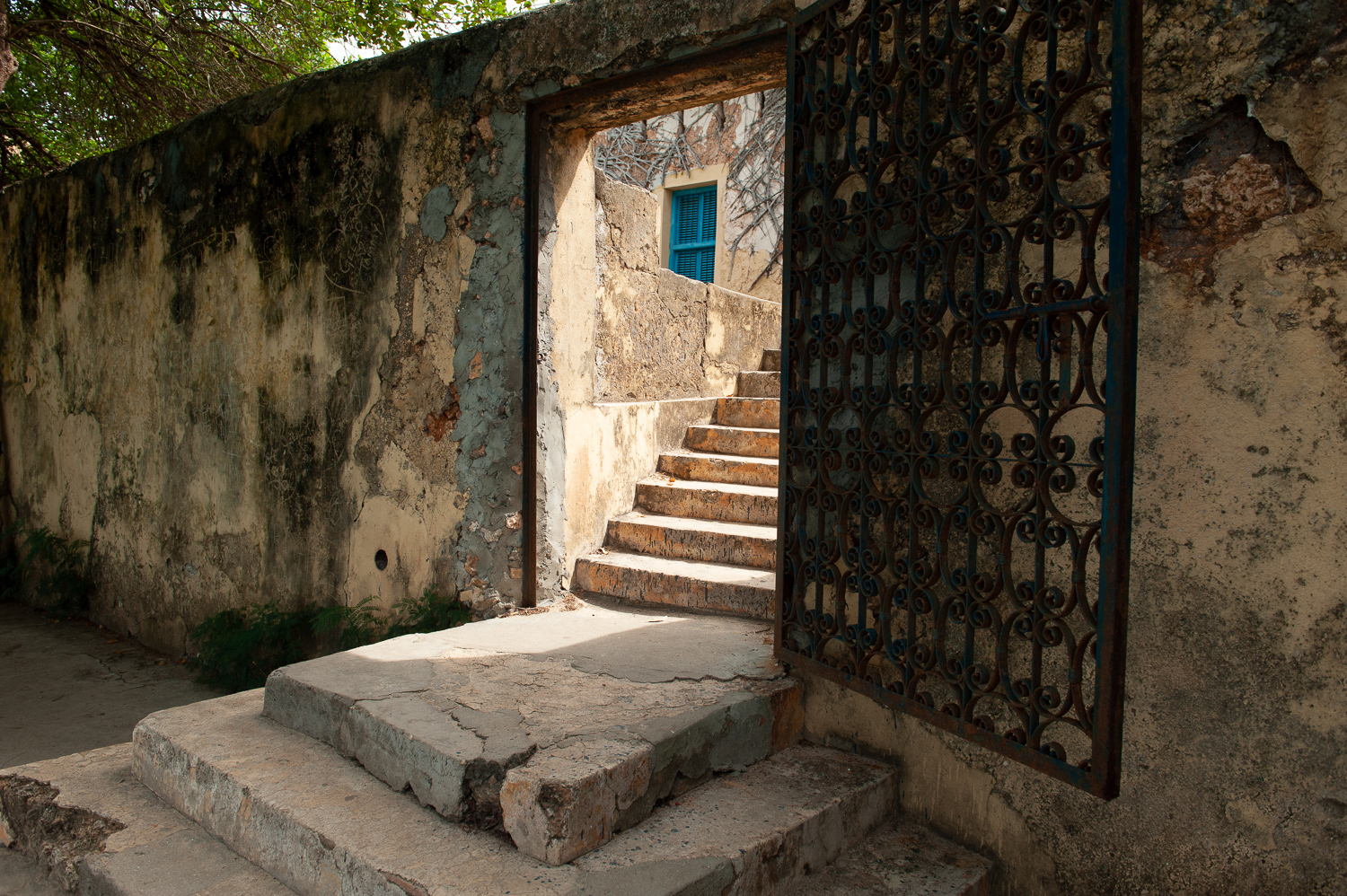
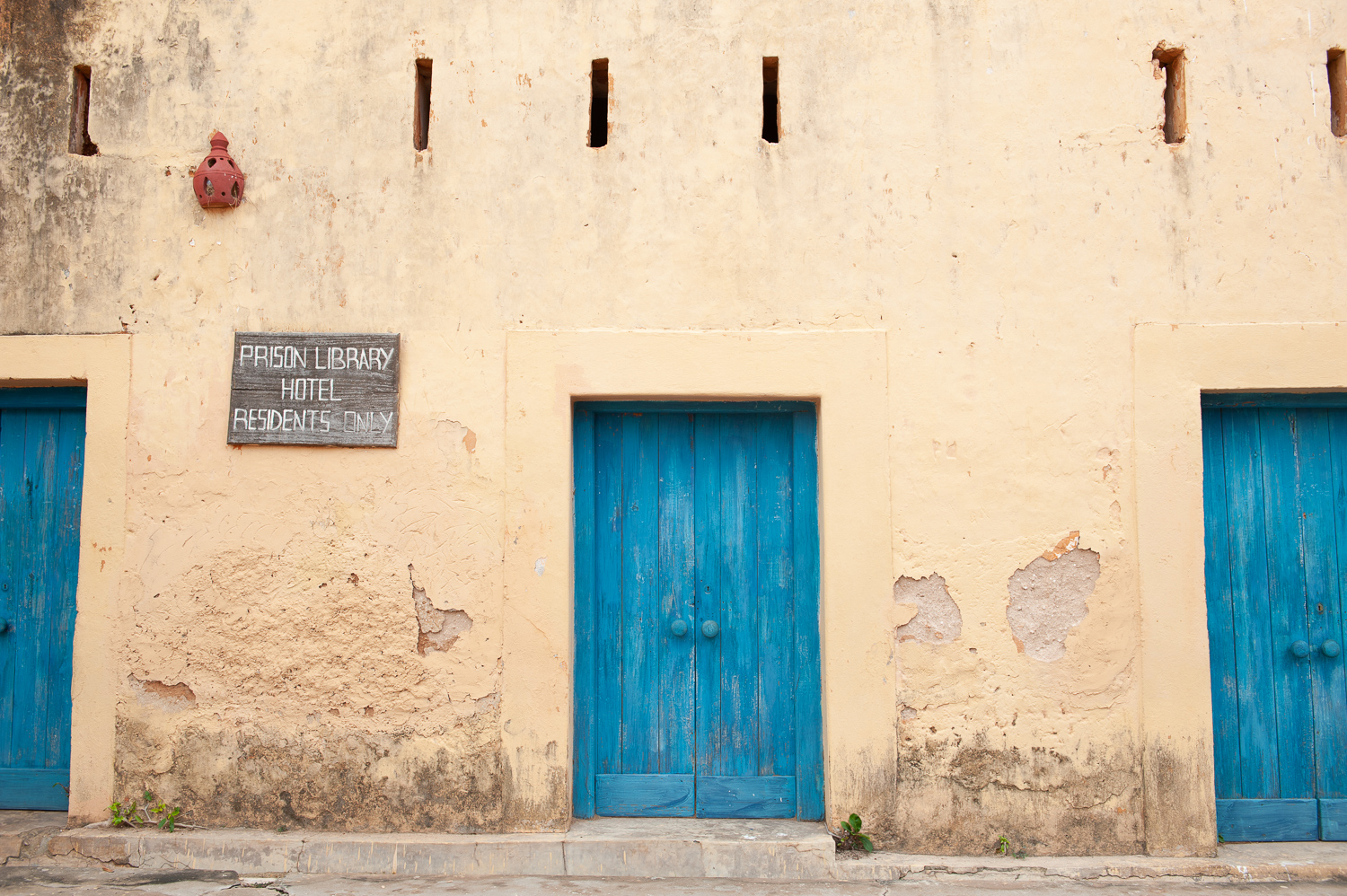

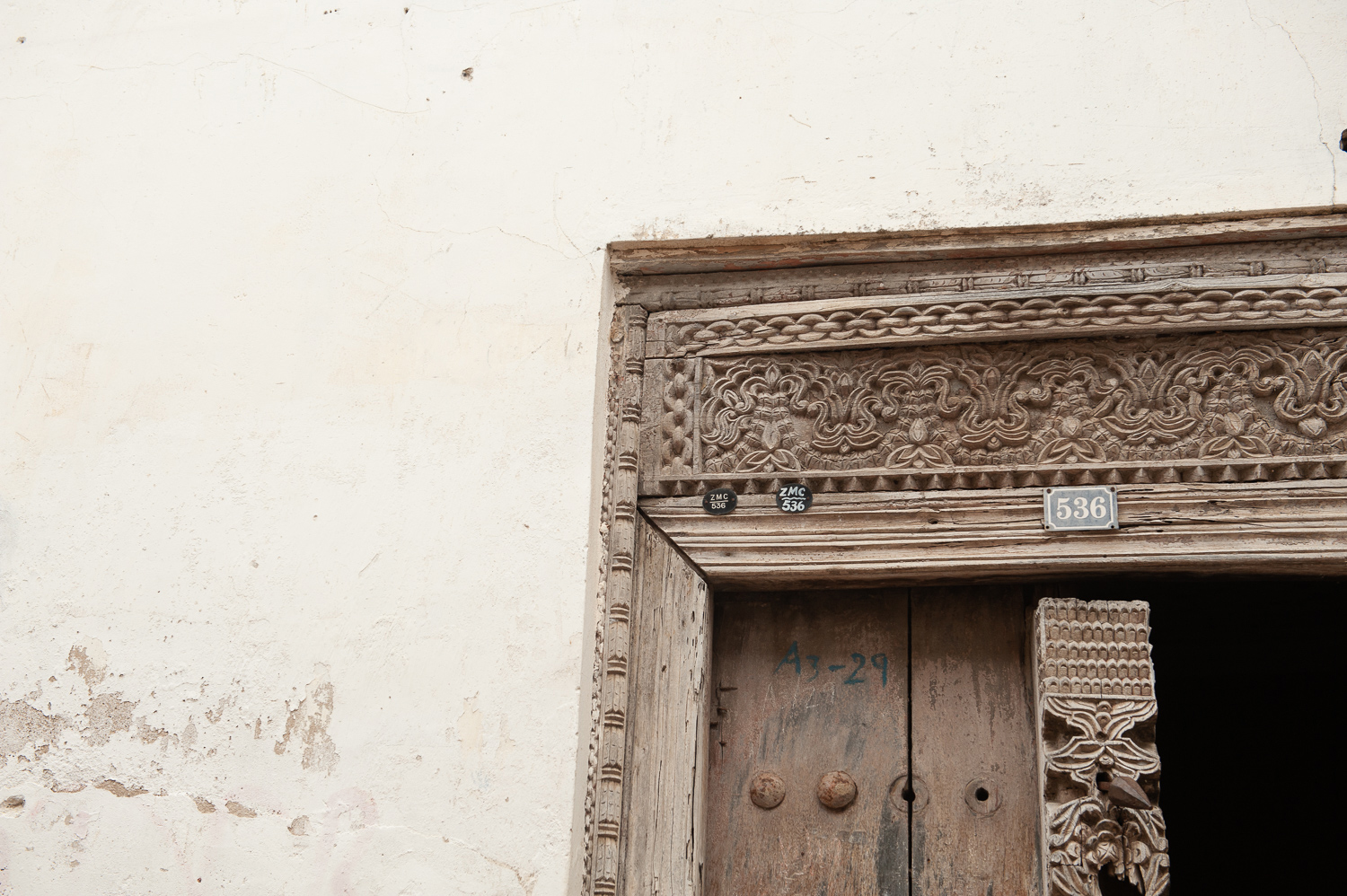
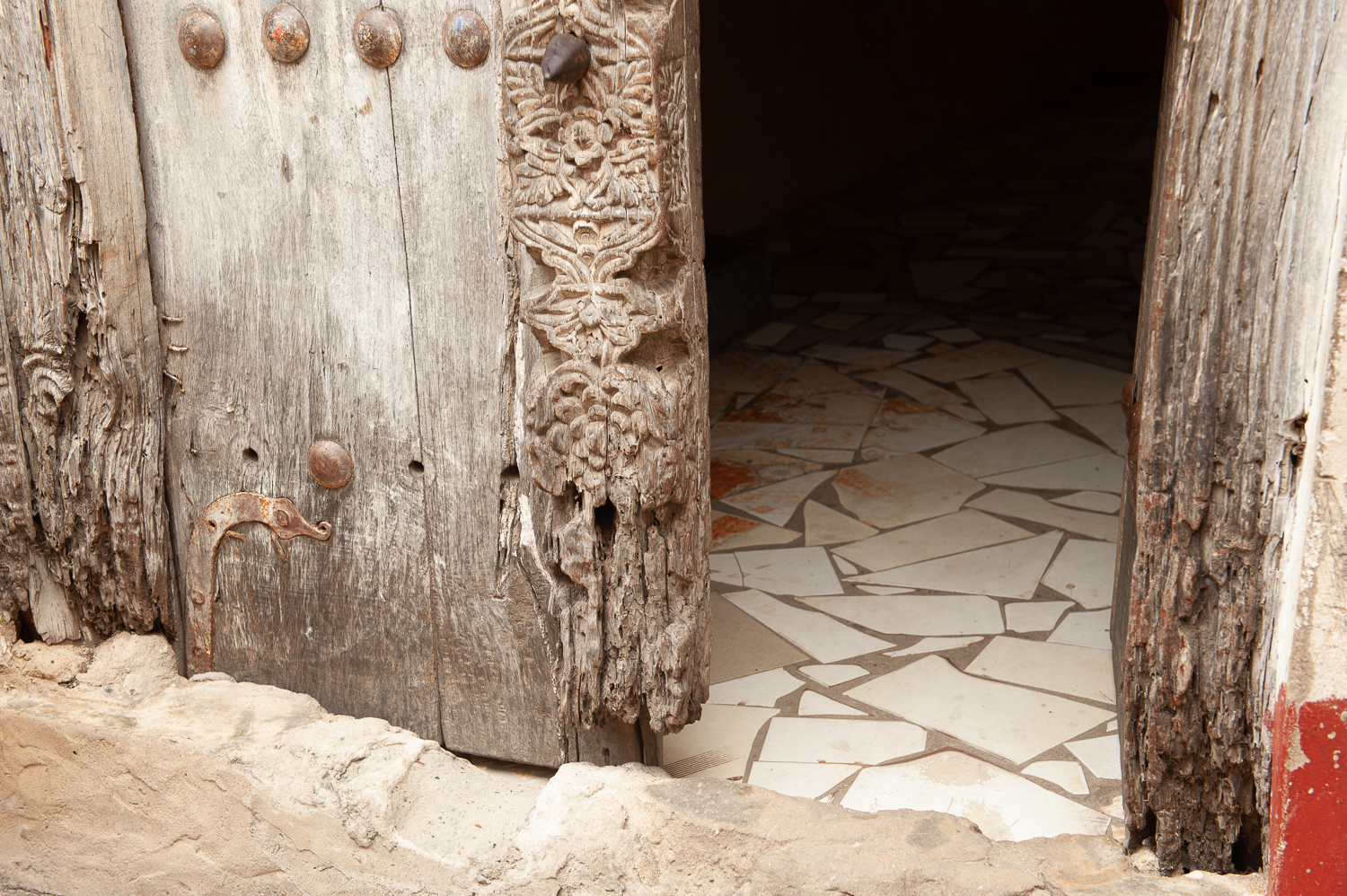
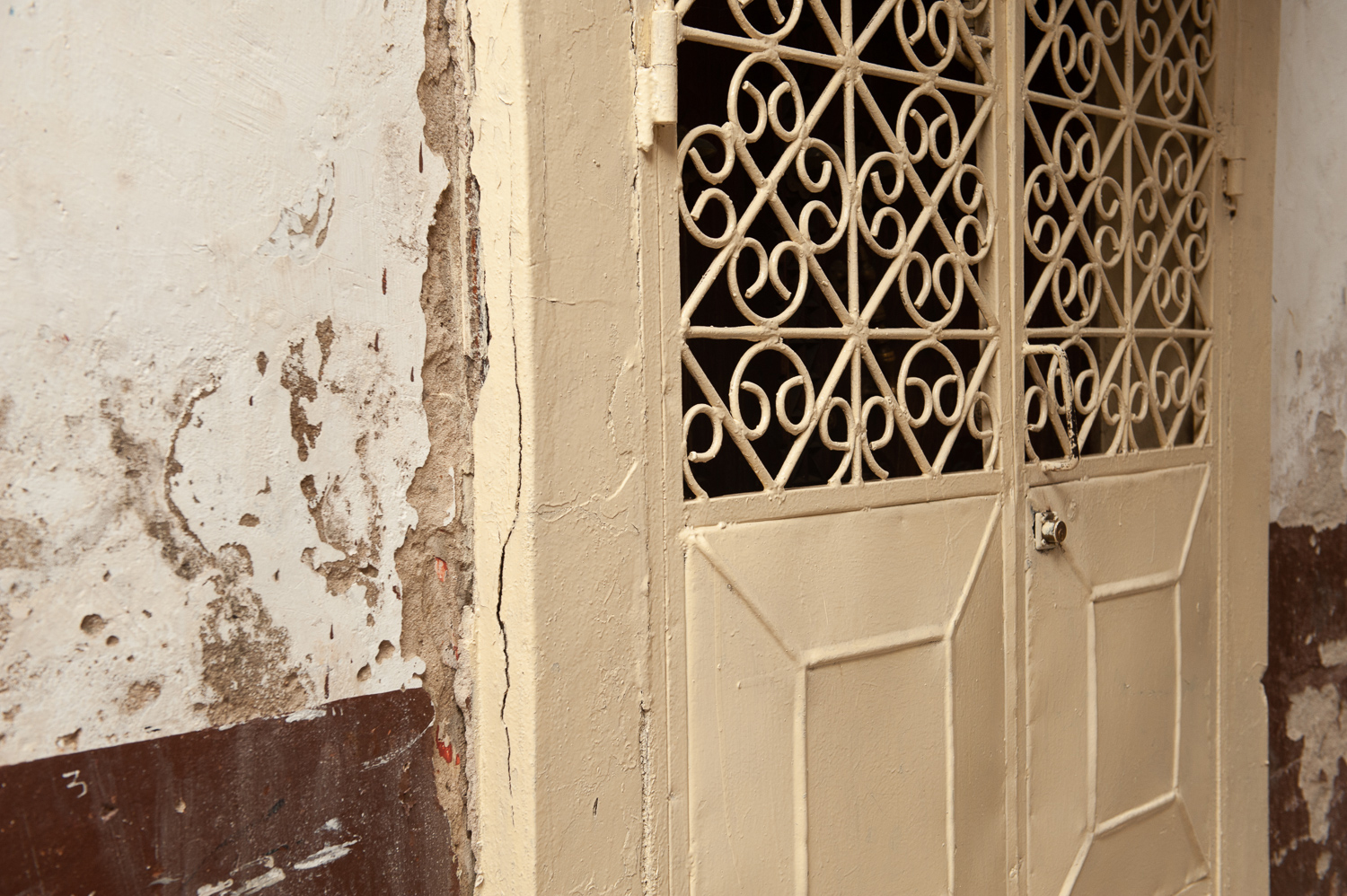


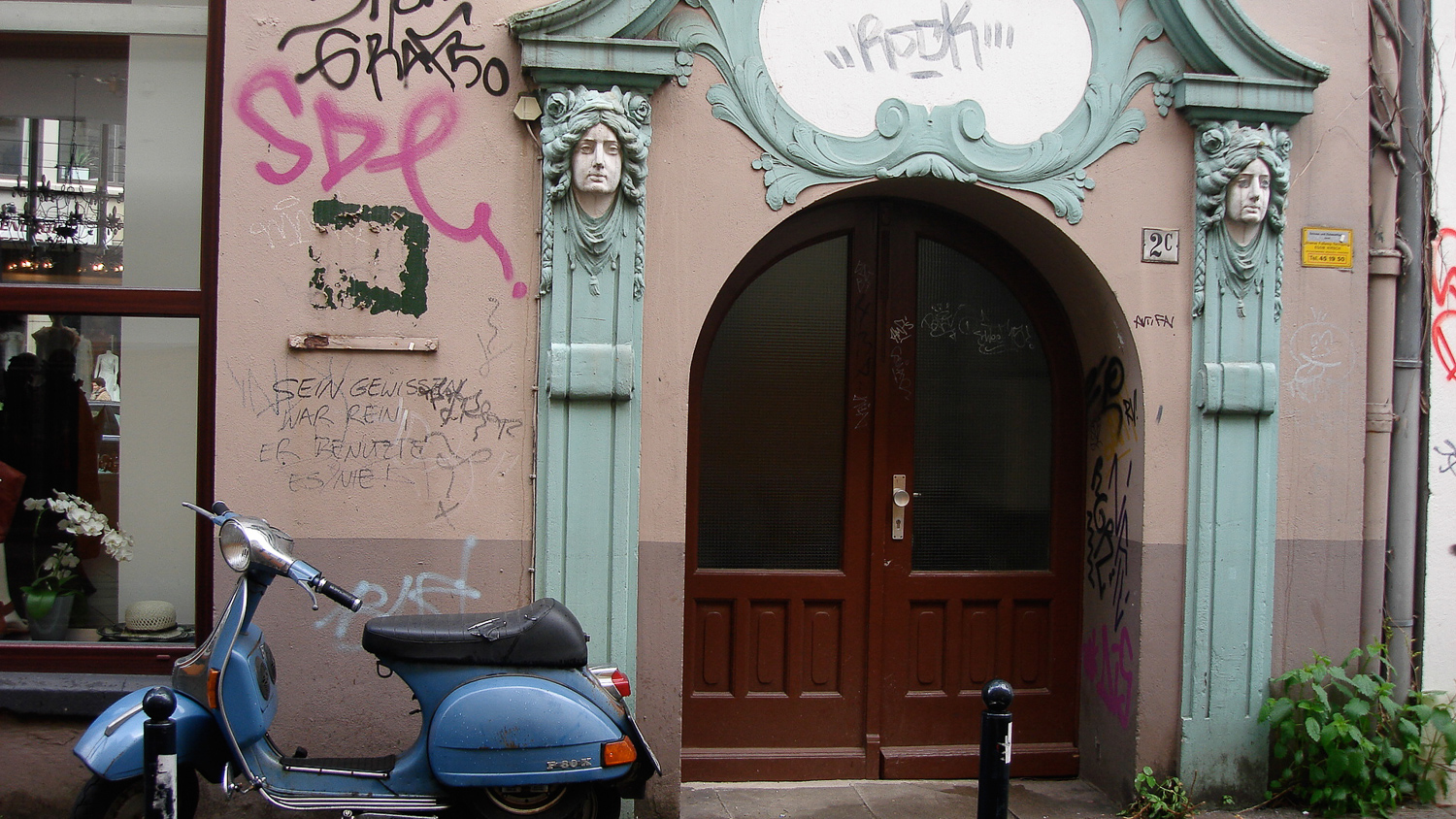
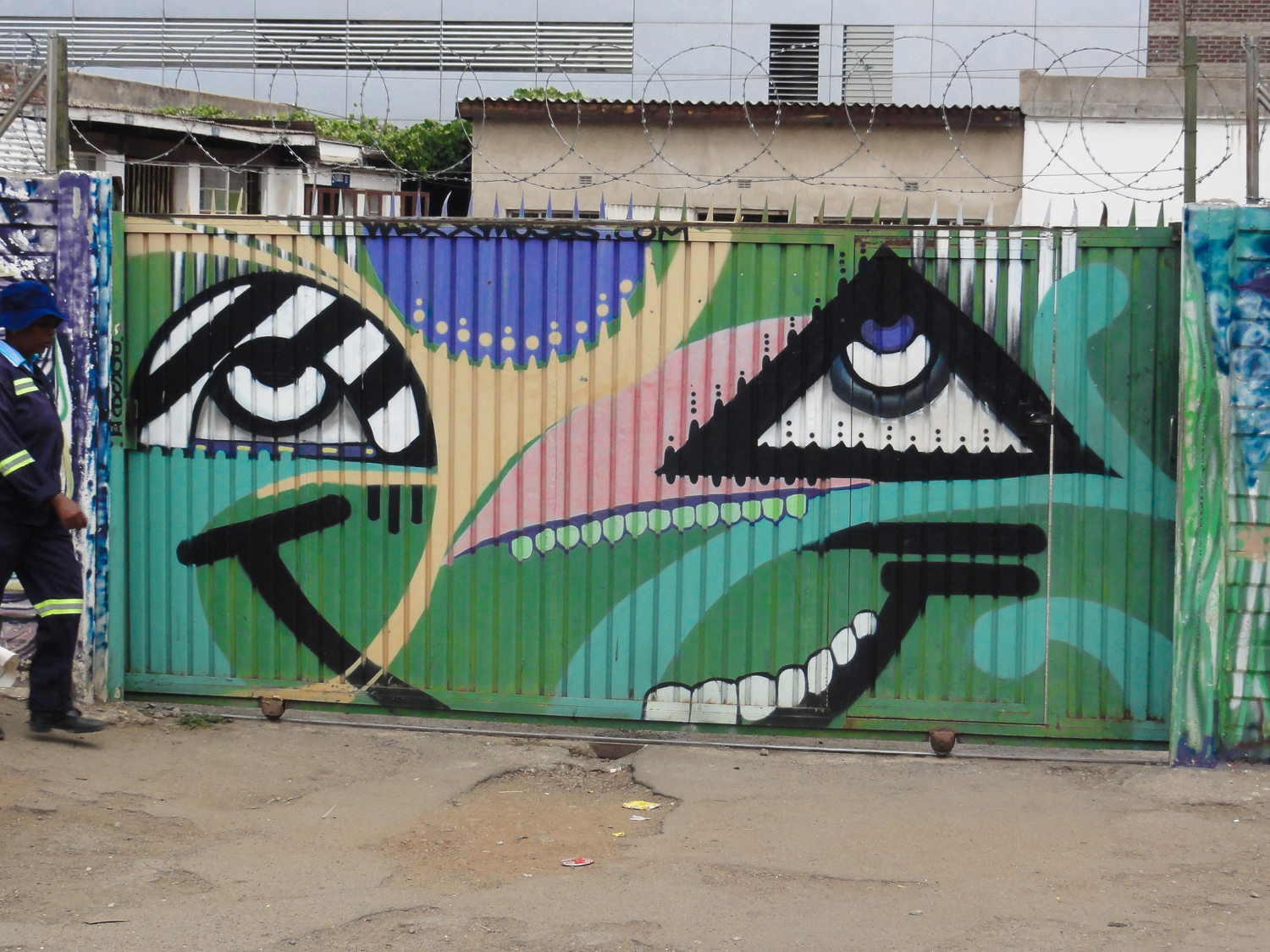
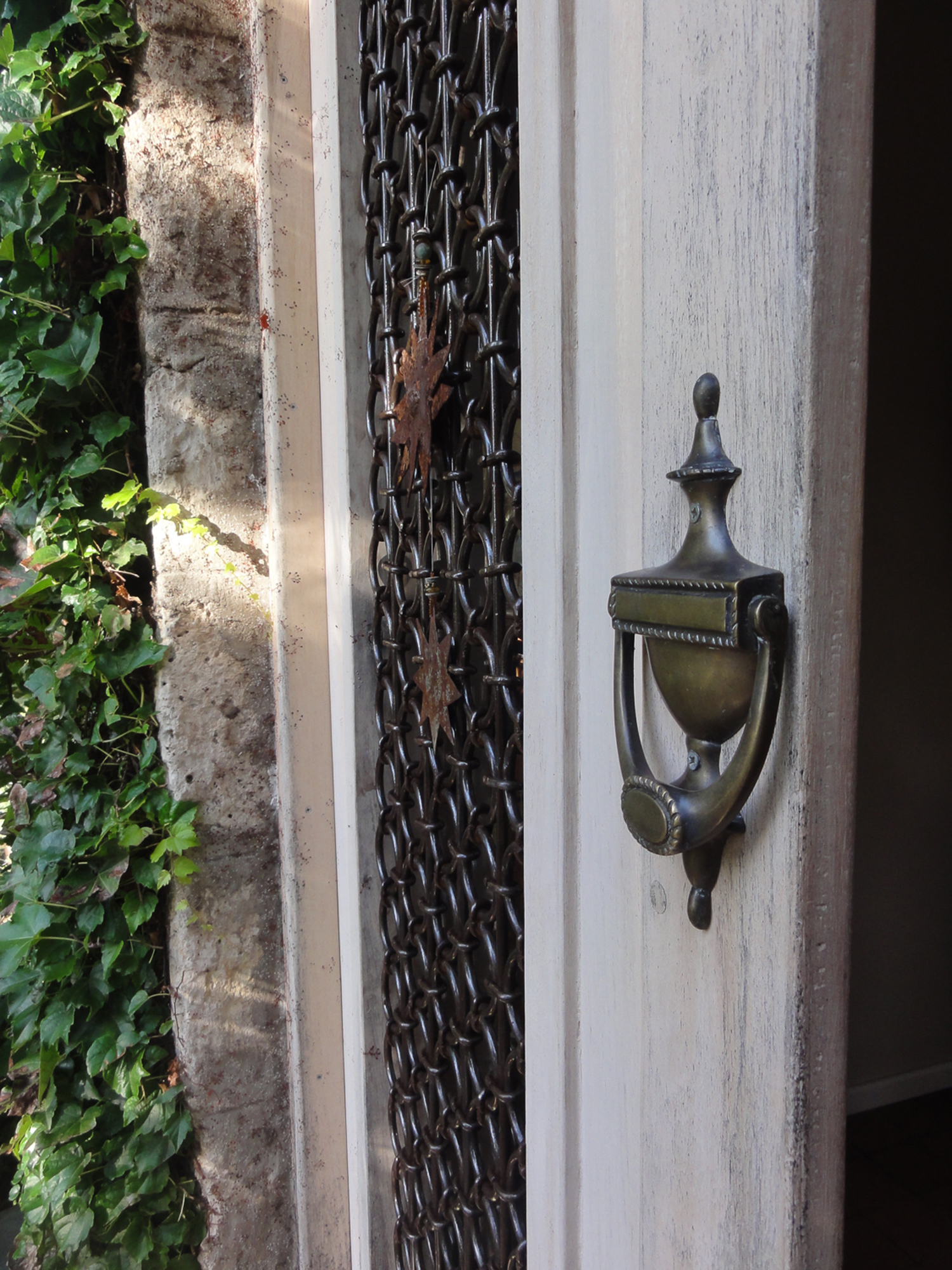
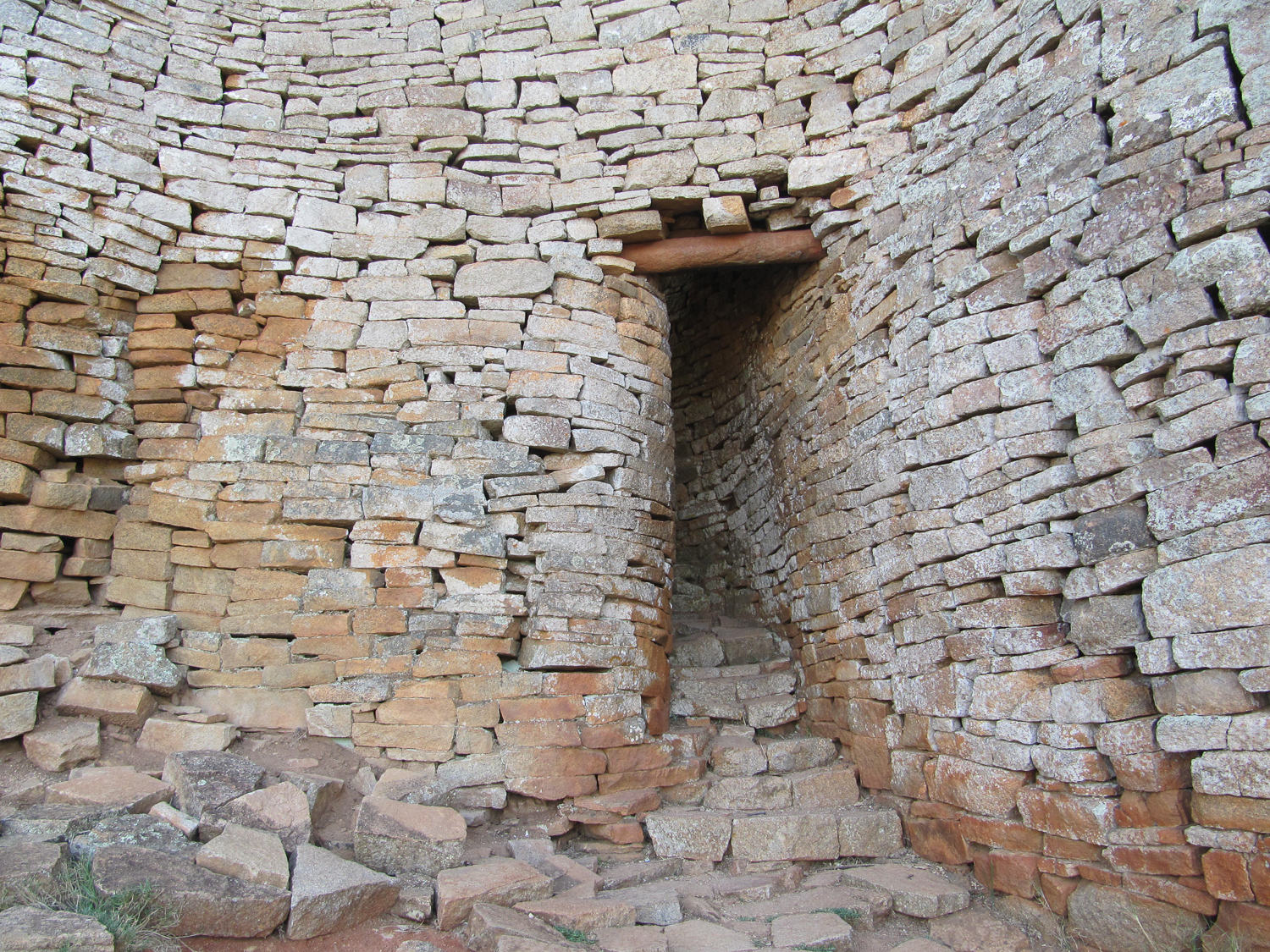
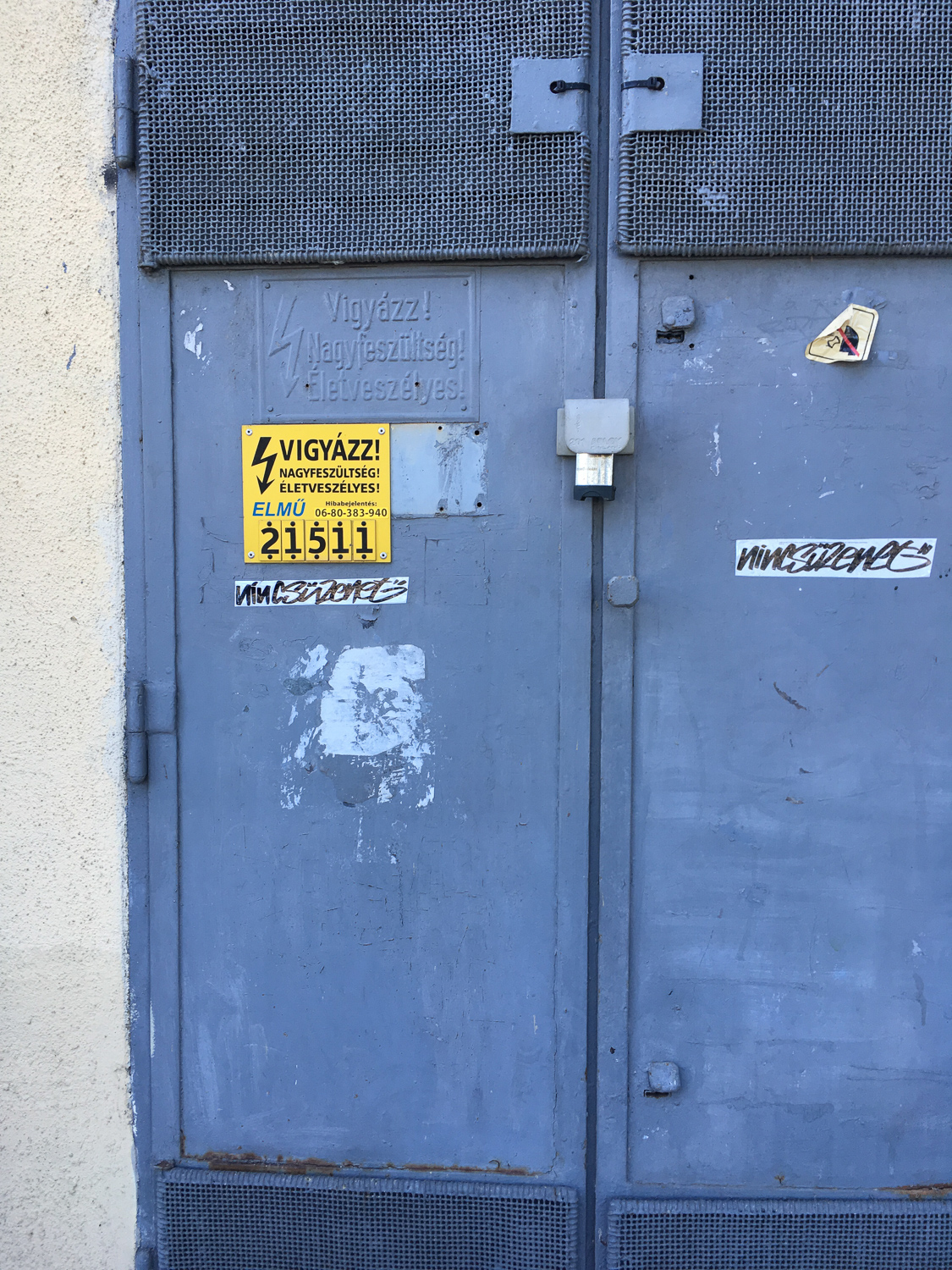







Nina Van Zyl is a Namibian freelance writer and photographer. She holds a BA degree from the University of Stellenbosch. From the gritty creative spaces of Braamfontein to the optimism of Windhoek’s media industries, Nina continues to explore what it means to create and how being a creative.